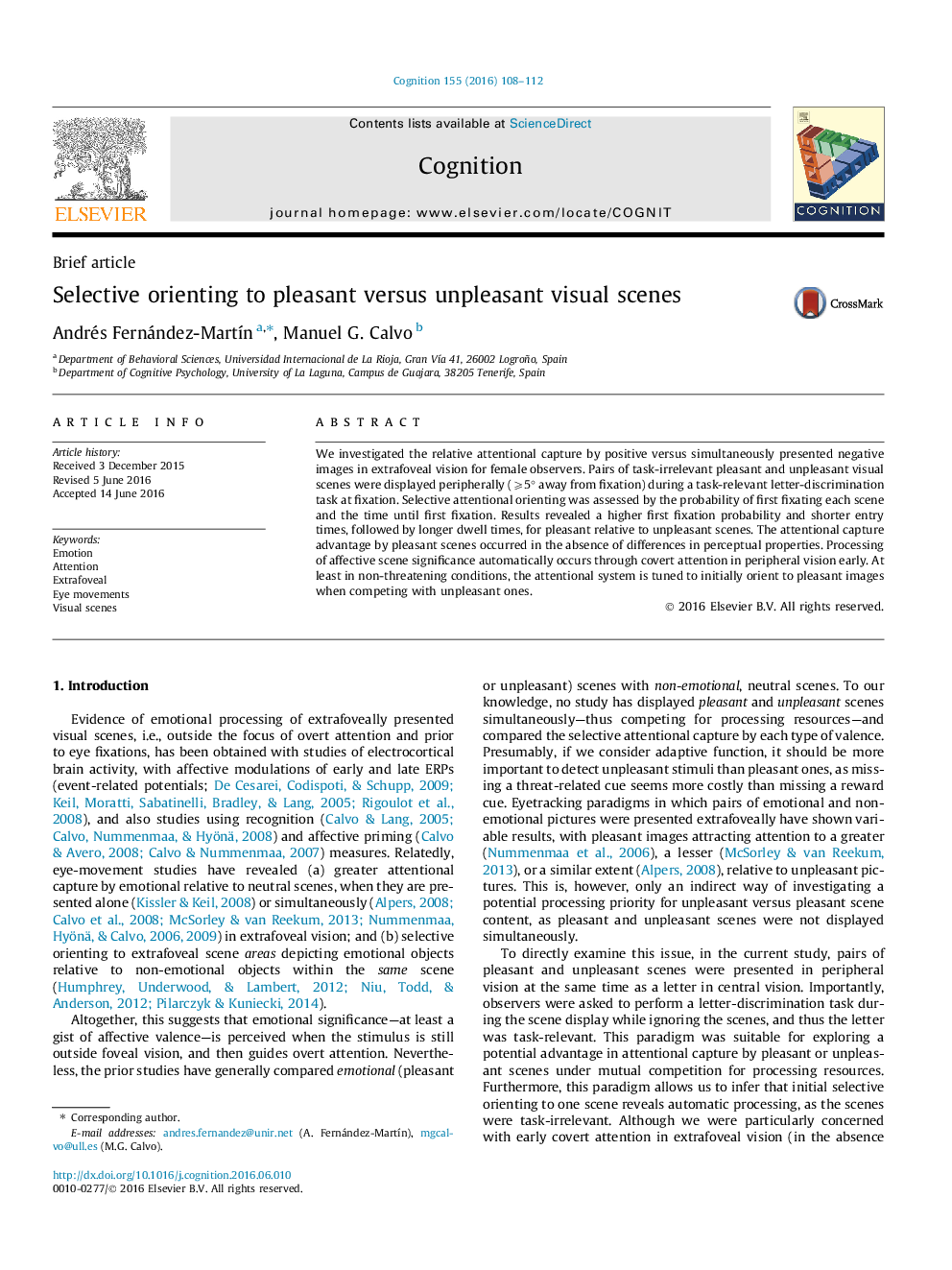| Article ID | Journal | Published Year | Pages | File Type |
|---|---|---|---|---|
| 7285857 | Cognition | 2016 | 5 Pages |
Abstract
We investigated the relative attentional capture by positive versus simultaneously presented negative images in extrafoveal vision for female observers. Pairs of task-irrelevant pleasant and unpleasant visual scenes were displayed peripherally (⩾5° away from fixation) during a task-relevant letter-discrimination task at fixation. Selective attentional orienting was assessed by the probability of first fixating each scene and the time until first fixation. Results revealed a higher first fixation probability and shorter entry times, followed by longer dwell times, for pleasant relative to unpleasant scenes. The attentional capture advantage by pleasant scenes occurred in the absence of differences in perceptual properties. Processing of affective scene significance automatically occurs through covert attention in peripheral vision early. At least in non-threatening conditions, the attentional system is tuned to initially orient to pleasant images when competing with unpleasant ones.
Related Topics
Life Sciences
Neuroscience
Cognitive Neuroscience
Authors
Andrés Fernández-MartÃn, Manuel G. Calvo,
